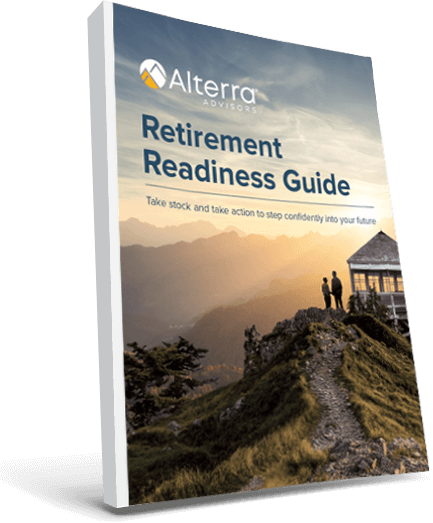Let’s assume you’ve accumulated a large amount of cash in your bank account. It feels great to log in and see that big balance, but your bank interest rate is .01%, making you wonder if your money could be working harder for you.
The stock market looks scary, but the interest your bank is paying isn’t cutting it. So…now what?
We find that assigning a job to each dollar is a good place to start. Like employees in a company, your dollars should be given specific roles to accomplish. Begin with how much you need to keep in cash, then you can move on to your longer-term goals.
Decide how much you need in cash reserves
Start by deciding how much you should keep in an emergency reserve and consider keeping this cash in a high-yield savings account. Some people keep three to six months of expenses in cash and call it a day, but make sure you adjust this figure depending on things like income fluctuations, any big upcoming expenses, and how close you are to retirement. With cash reserves set, you’ve identified how much extra you have.
Then, answer two important questions:
- Do I need access to the money soon? This will determine if quick access or other benefits like tax deductions are more important.
- Am I comfortable with some risk? This determines whether safety or growth is more important.
Based on your answers to these questions, you might find one of these four strategies to be most helpful:
1. I Might Need My Money Soon and am Risk-Averse
There are many reasons you might need access to your money soon. Maybe you’re approaching retirement and want to begin taking income from your portfolio. Or perhaps you’re planning to purchase a vacation home or have a medical issue that is going to require you to pay part of the costs.
Maybe you just feel better having a large emergency reserve and aren’t comfortable taking any risk at this point in your life. If this sounds like you, a high-yield savings account can be a great way to earn more interest on your money without taking stock market risk.
2. I May Need Access Soon But am Willing to Take Some Risk for Growth
If you’d like access to some of your cash soon, but are comfortable taking some risk to grow your money you’ll get at the bank, consider a combination of the following:
- Invest in a brokerage portfolio. This investment account allows you access any time without penalty, but what’s important is that you choose more moderate investments to avoid the full risk of the stock market. For example, you might choose to invest half in stocks for growth and half in bonds to reduce volatility.
- Utilize cash value life insurance. Cash values in a well-structured life insurance policy can build wealth without full market risk and double as a backup reserve, providing access to funds on a short-term basis through withdrawals or loans.
3. I Want Access and Am Willing to Take High Risk for High Growth
Maybe, like the first two scenarios, you’d like access to some of your cash, but you also have a higher tolerance for risk for potentially larger gains. Here’s a good strategy to follow:
- Invest the remainder in a brokerage portfolio. You’ll use the same kind of account, but this time, you might invest up to 100% of extra funds in stocks, taking more risk, but giving yourself the opportunity to grow your money faster.
- Don’t forget taxes! Being a tax-smart investor can add to your bottom line. The less you pay in taxes, the more you’ll keep in your pocket.
4. These are Long-Term Funds, so I want Maximum Growth and Tax Benefits.
What if your sole focus is maximizing gains and tax benefits for the future and you don’t need access to your extra cash anytime soon? Here are a few strategies to follow:
- Maximize your retirement accounts. Use every tool available for retirement savings, such as 401(k) matching from your employer and Roth IRAs. If your income is too high to fund a Roth IRA directly, you may want to consider a backdoor Roth IRA.
- Create tax-managed investment. As you build wealth, you can reduce your tax obligations by holding investments that may generate higher gains in tax-advantaged accounts and individual stocks or funds like ETFs that are more tax-efficient in taxable accounts.
Still a bit scared of potential market swings?
If you’re intimidated by the current market, a bit of history might set your mind at ease. Market declines happen regularly, but they don’t last forever. Larger declines, those of 20% or more, happen once every 5-6 years on average and, though they take a while to recover, history shows they always do.
Still struggling to invest a lump sum? you might like the idea of investing in monthly installments, called dollar cost averaging, something we cover in a recent article on deciding the best day of the year to invest. For the most part, time in the market is better than timing the market, meaning the sooner you start investing, the better. But if putting all your cash in at once is too much risk for you, dollar cost averaging might be for you.
Your advising team can help!
No matter what the market is doing, there are always opportunities for your cash to work in ways that will help you achieve your goals. There’s no single solution for every investor, but there is certainly a strategy out there that’s right for you. Fortunately, your advising team can serve as your partner to help you navigate the uncertainty and find the best fit for your needs!
Investing in securities involves risk of loss. No investment process is free of risk and no strategy or risk management technique can guarantee returns or eliminate all risk. Past performance is not a guide to future performance. The value of investments, as well any investment income, is not guaranteed and can fluctuate based on market conditions. Diversification and dollar cost averaging do not assure a profit or protect against loss. Bond prices are inversely correlated with interest rates: when rates go up, bond prices fall and vice-versa. Bonds have maturity dates at which point the principal amount must be paid back in full or risk default. Bonds have some advantages over stocks, including relatively low volatility, high liquidity, legal protection, and various term structures. However, bonds are subject to interest rate risk, prepayment risk, credit risk, reinvestment risk, and liquidity risk. These opinions above are for general information only, are not intended to provide specific advice or recommendations for any individual.
Zach Hamilton
CFP®
Partner, Financial Advisor
About the Author
Zach graduated from Gonzaga University with degrees in Marketing and Finance. While growing up, Zach heard stories from his grandfather about his work as an insurance agent, and other stories from his dad who was an investment manager. They both spoke financial “languages” but had completely different dialects. Recognizing the breadth of the financial vocabulary ultimately led to Zach’s passion for financial planning. He credits his family for this enthusiasm. Zach sees his time with clients as an opportunity to translate all of the different – and often confusing – information they’ve heard and provide clear guidance for each unique situation.
Zach enjoys working with people – his clients – who also appreciate that their financial decisions have an impact not just on themselves, but also on their families, charities and their own life legacy. Many of Zach’s clients have a strong desire to “make a difference”, and they rely on his financial expertise to magnify their philanthropic goals.
The “Alterra” name was coined by joining the Latin roots “alter”, the origin of the word “altruism” with “terra” meaning earth or land. This name reflects the company philosophy of “clients before profits” and providing firmly grounded advice.


